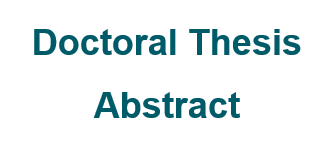Effect of early shearing during gestation on the performance of the progenie
Doctoral thesis abstract
DOI:
https://doi.org/10.31285/AGRO.25.1517Keywords:
shearing, production, reproduction, offspring, ewesAbstract
Research has shown the interesting contributions of shearing during mid or late gestation on the performance of lambs from birth to weaning. However, there is no information on the effects of shearing in the first third of pregnancy, on the well-being and productivity of the offspring in adult life. The aim of this study was to investigate whether shearing during the first third of gestation, in a critical time window for the development of the placenta and the fetus, can influence the live weight at parturition, weaning and the survival of the lambs. Additionally, it was studied whether shearing in the first third of gestation is capable of programming metabolic and physiological modifications in the fetus that affect the growth, health and reproductive performance in the adult life of the offspring. Shearing in the first third of gestation significantly increased birth weight of single lambs (P = 0.004) and twins (P = 0.05). The higher weaning weight (P < 0.0001) was related to the higher daily live weight gain (P ˂ 0.0001) in birth-weaning period. The extension of the gestation period (P < 0.0001) explained only 56% and 87% (single and twins) of the increase in total live weight at lambing. Twin lambs from prepartum shorn ewes attempted (P = 0.004) and succeeded in suckling earlier (P = 0.0004) than control lambs. The greater vigor at lambing, together with the greater weight at weaning, may explain the higher (P = 0.04) survival rate. Early prepartum shearing did not affect live weight of ewe lambs from weaning to 18 months old. However, the gastrointestinal parasite egg counts per gram of fecal matter (P = 0.07), as well as the Famacha index (P = 0.02) were significantly lower than in controls. Prepartum shearing affected live weight of male lambs (P = 0.02), although there were no differences in the response to the parasitic challenge. Prepartum shearing did not affect any of the reproductive variables studied in ewes and male lambs. The results of this thesis show that shearing in the first third of gestation is a technique capable of affecting the productive performance of the offspring in the short and long term.
Downloads

Downloads
Published
How to Cite
Issue
Section
License
Copyright (c) 2024 Agrociencia Uruguay

This work is licensed under a Creative Commons Attribution 4.0 International License.
| Article metrics | |
|---|---|
| Abstract views | |
| Galley vies | |
| PDF Views | |
| HTML views | |
| Other views | |

















